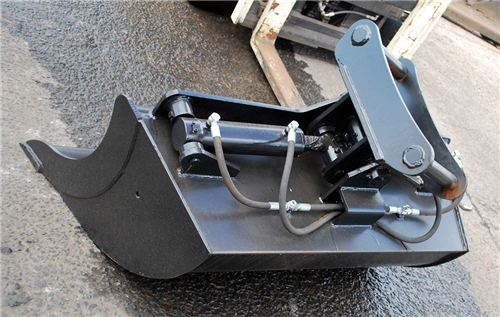Views: 473 Author: Site Editor Publish Time: 2021-09-23 Origin: Site

In order to improve cost efficiency and productivity, we must understand when to use GP buckets instead of mud buckets. But one thing we have reached a consensus is that whenever an incorrect excavator attachment is used on a machine, a lot of money may be wasted in terms of fuel, operator costs, and service costs.
In theory, all excavators can use larger buckets even largest excavator buckets because they can generate huge amounts of power. However, just because they can use a larger excavator bucket does not mean you can do more work. On the contrary, large excavator buckets like big size rock bucket reduce the performance of the machine. Because for large excavator buckets, they try to penetrate the ground, thereby using too much machine power.
Excavator buckets are specifically designed for each machine classification to create the best digging efficiency, safety, and mobility. Theoretically, different machines should be equipped with the corresponding excavator bucket. Therefore, there are many kinds of excavator buckets, such as rock crusher bucket, tilting ditching bucket, excavator blade bucket, etc. The more you exceed this efficiency table, the more your costs increase. If the excavator bucket is bigger, you can move more soil with each bucket load, but it always slows down the excavation process because it uses more machine power, which increases your cost. It requires more fuel and more time, which increases labor costs and reduces efficiency, which means you must generate more machine hours to complete the same work, so your service costs will increase.
In addition, a bucket with too high capacity will cause more wear and tear on the machine, reduce reliability, and cause greater safety hazards to the working environment. When loading, the machine like skid loader rock bucket may tip over on a slope or fall into the truck. Excessive buckets of excavators can also cause structural problems with machines and connectors. This creates a dangerous environment for other people working around.
At the work site, we often need to move various accessories. If the digging bucket is too large, they will no longer be able to transport it into the mud bucket. Many operators will use mud buckets to dig and load hard materials. Although this is still effective, it will reduce work efficiency.

This question may seem simple, but you need to consider the density of the material, the hardness, and the bucket you are using. The teeth on the GP excavator bucket are designed to break the ground for easy penetration. Mud buckets with straight sides and extra width rely on powerful machine power to penetrate and pull the bucket through the ground. Moreover, due to the substantial increase in fuel, operator costs, and service costs, it is not cost-effective. Similarly, in soft or inflatable materials, the larger the capacity of the bucket, the better the performance.
We stock a lot of other excavator accessories for sale, such as casting stainless steel machining parts, trad fabrication stainless steel parts, pump impeller casting parts, etc. Our product range includes excavator bucket teeth and Adapter, Locks, Grader Blade, Cutting edge and End Bits, Undercarriage parts, etc. For more information, please contact us immediately.